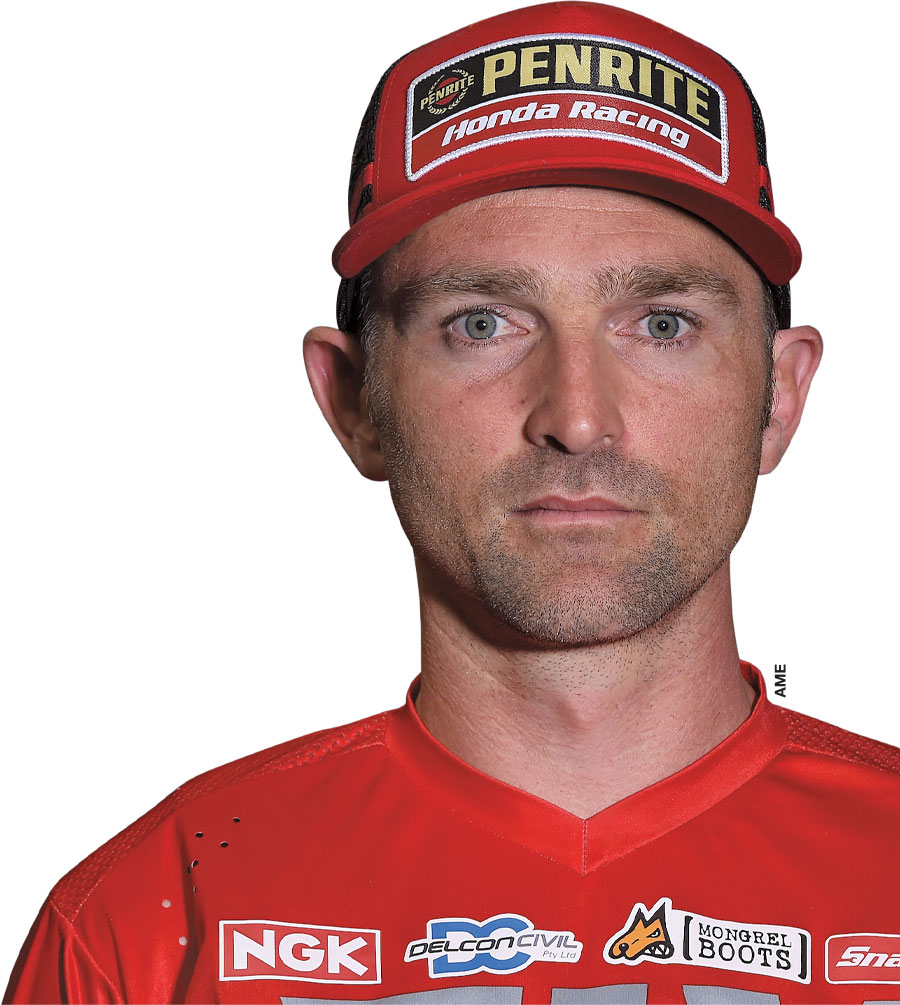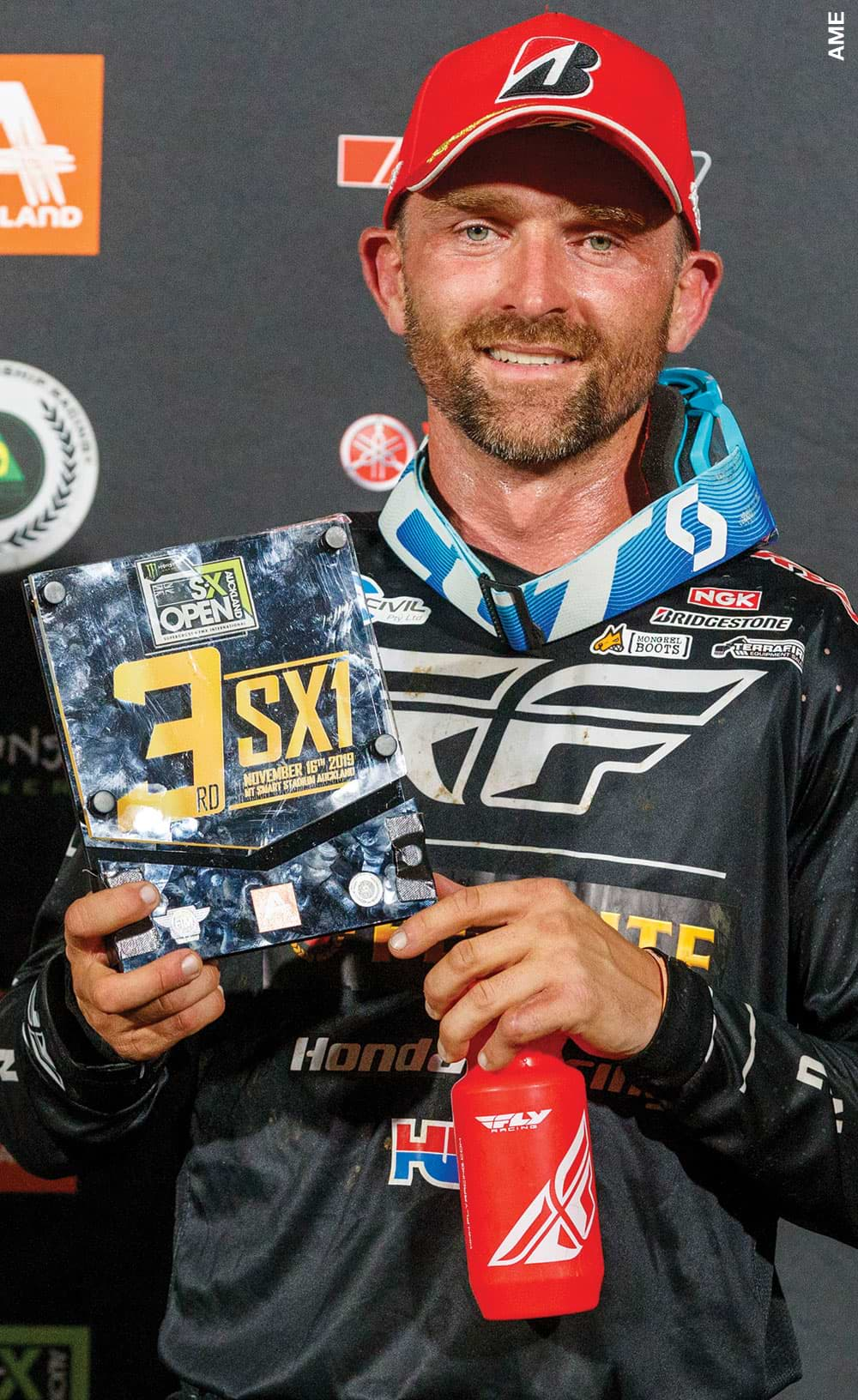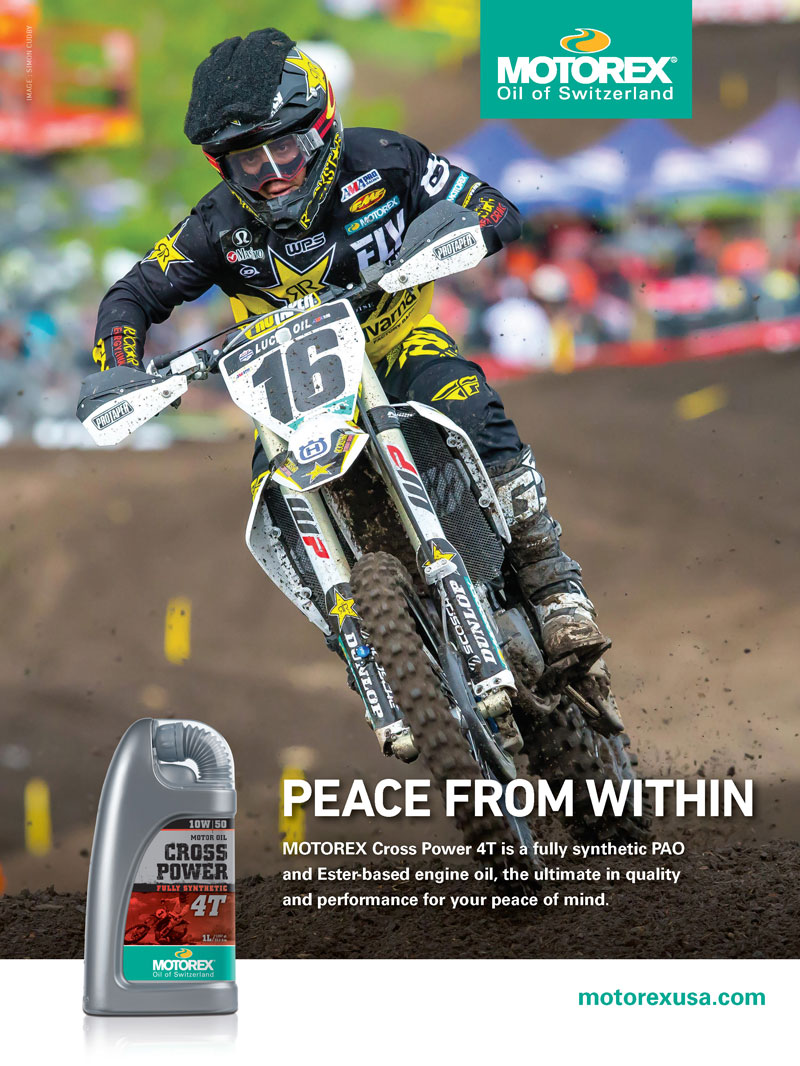




Racer X: After leaving Australia early in your career, did you plan on coming back?
Brett Metcalfe: I always did. When I was 15 or 16, I always dreamed of even racing the GPs or going to the States to race supercross in America. So I did that, but it was always a plan of mine to return when I’m old. I don’t want to say on the downside, the backside of your career, and come back, kind of like what Jason Anderson just explained about Brayton coming down and racing a little supercross here in Australia. I wanted to do that for outdoors as well and the whole series. Everyone, for kids who have looked up to me and racing in the States. I would always envision racing back here for a few years and retiring here.
Talk about the family move, though. How old were you when you left?
I was 16. It was huge. When I first left, I was just packing bags. I was out of there. I was like, “I gotta go and chase the dream.” Then I was able to do that. It’s been fortunate. It’s been an amazing career. I’ve really enjoyed it and been able to travel. Now to come back with my wife and two kids, it’s like a whole different game. I moved back to the town in Mannum where I grew up, where I was born. So to me, that’s really special. I have the support of not only family but my best friends that I grew up with since I was going to kindergarten. My kids are established there. It’s just like replicating what my parents did with me. They’re starting to ride and stuff.

How much more racing do you have in you? Is it getting tougher, or do you still have some left?
Oh, it definitely gets tougher—I won’t lie—but I still feel good. Am I as competitive as I was a while ago? Yes, but the level that you push yourself and you’re willing to do, that falls away a little bit. You definitely pick that back. . . . I’m still competitive, but as a father, as a dad, there’s a family component of it that takes away from the racing side a little bit. It’s a percentage. So you just balance it out.
But you were second in the championship last year.
Yeah.
Do you still come to each season, indoors or out, with the goal to win? The goal is to be champ?
Well, the good thing is in Australia I feel like I am one of the guys that can contend for the win. In the States right now, I’m probably a top-ten guy. That kind of falls away. So it’s enjoyable to be able to race for some wins, especially for outdoors and for supercross last year. I did win a round in supercross, so it’s nice to be able to compete for the win.
You were up front at the New Zealand S-X Open Auckland.
It was cool. I was enjoying it, getting to race. I obviously was trying to hang there with Jason [Anderson]. He was just really strong through the whoops, and I’ve been really struggling there this year. Other than that, I felt competitive on the track. I felt good. I felt I had a good rhythm. It was nice to be up in the front.
Is the goal to come back next year?
Yeah, we’re definitely doing one more year, and then after that we’ll just assess. It’s basically the way I have it worked out with Yarrive Konsky, who is the team owner at Penrite Honda. We have a pretty neutral deal. He looks me in the eye and says, “Are you good to go?” And I say, “Yes, I’m good to go,” or “No, I’m not good to go.” And then we call it there. But right now I’m committed for outdoors next year. At the end of outdoors he’ll look me in the eye and say, “Are you ready for supercross?” And I’ll decide then and there. So that’s how the deal works out. I’ll keep going until the day that I lose the motivation to train and work and put the laps in—even though that’s condensed a lot now that I’m a bit older, but still it’s effective. The day I lose the competitive drive, then that’s the day to step away.
That’s interesting you bring it up. Justin Brayton says the same thing. He’s like, “I don’t do nearly as much as I did when I was 25.” Is it the same for you?
Oh, 100 percent. Last year, even, Sheena went back to the States for six months to pack the house and everything, so I was like a full-time dad and racer. My schedule was condensed. I was dad first, rider second. It was really condensed. But I think just skill level, honestly, I look at a lot of guys like Ricky [Carmichael] retired early, RV retired early, James [Stewart], and a few of the really high, elite names in our sport. I just feel like they must have ridden so much at a young age. That’s why their ability was so strong. I feel like now that I’m older, I must be catching up to their hours. My skills feel so sharp because I don’t put that much effort in it, like Brayton said, when he was 25. I don’t work anywhere near where I used to. But the skills are sharp. So that’s kind of what keeps me going. Unfortunately, there is a bit of a deficit in the talent. I don’t want to say this in a negative way, but a lot of the young Australian riders coming through, they haven’t had the supercross experience. So that’s what keeps me really relevant here, is that I have thousands of laps, where a lot of these guys haven’t had that opportunity to do it.

So it’s not just like if we all of a sudden had this flood of you and Chad and Byrner, and all these guys who were really good—that’s not just a coincidence?
Yeah. Supercross was at the forefront of the Australian scene then, and it was almost more supercross back then. I was racing at these events when I was 13. Bang. We’re out there as kids doing it. Then it’s kind of stopped, and everything’s dried off a bit. It wasn’t as popular. Not so much, but it just wasn’t as common, and the kids weren’t engaged in it as much. But for us, that was it. We were riding supercross. We were going to be Jeremy. Then it kind of fell away, and now I think it’s starting to build back up. Having these events where top guys are coming down to race, it helps.
Let’s be honest: if you’re going to try to make the move to the United States, if you have to learn supercross by then, you have such an uphill climb.
It’s finished. You’re not going to cut it. You look at myself, look at Chad. Chad is the blueprint of Australian motocross riders. He was supercross. It was all about supercross. He went to the GPs and did amazing and finished second, but it was all about supercross for him and myself and Byrner. But now the guys don’t have that. It’s motocross first, so they’re more tied to the GP thing, and that’s why we have a big influx next year of Aussie riders going to the GPs. There’s not a lot of guys going to the States anymore, so it’s great. Hopefully we will have some—obviously, the Lawrence brothers are strong there. But I think in the next couple years we’ll have a couple more guys go to the States and try.
Because of races like this?
Because of these events, and with Luke Clout, he’s got the talent and he’s a young guy, hungry for it. So he’s going to carry the flag straight out. ![]()


